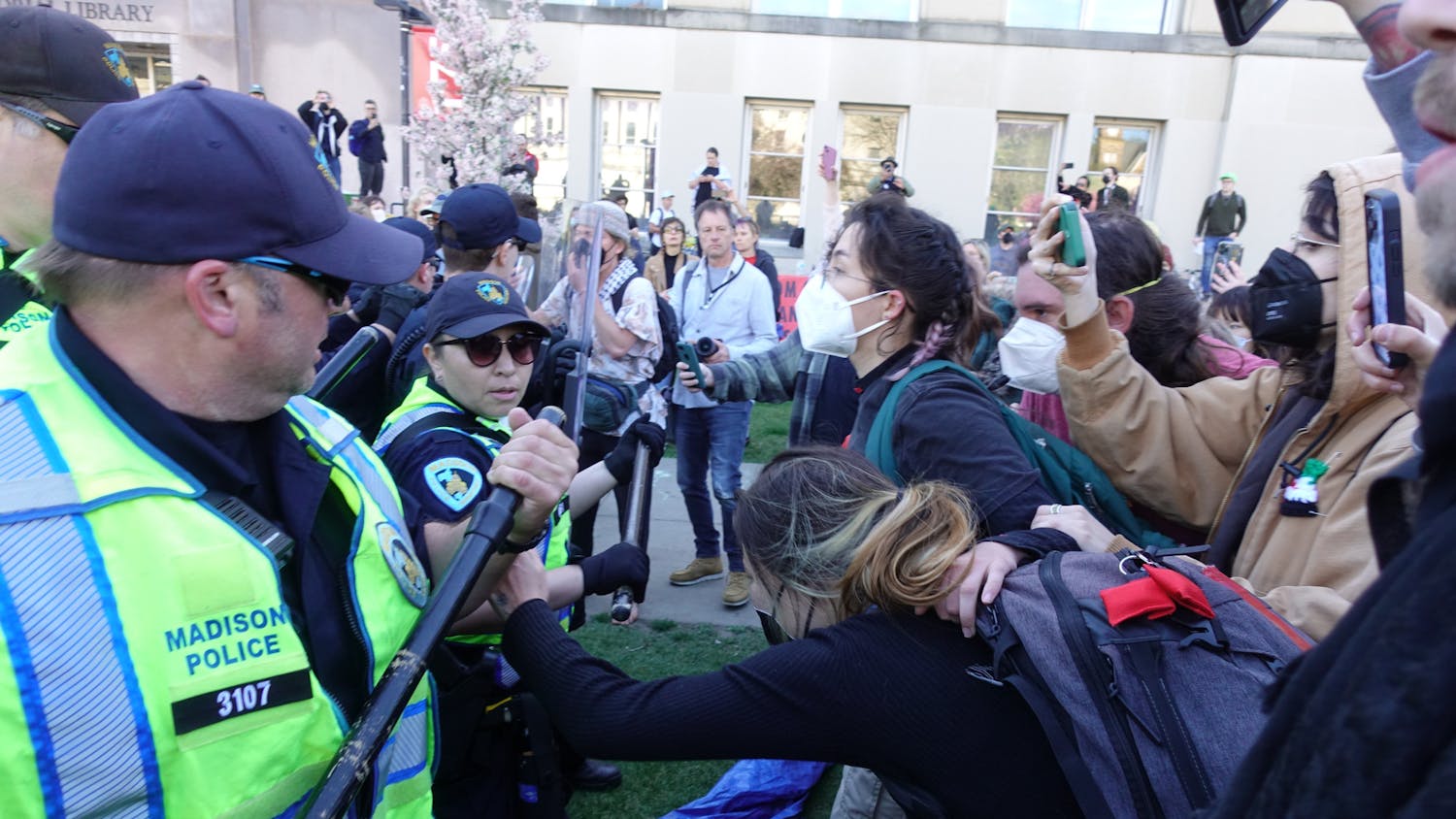In a lecture hosted by the Wisconsin Alumni Association on Tuesday, UW-Madison faculty Dr. James Conway, R. Alta Charo and Dr. Jonathan Temte discussed a source of hope during the COVID-19 pandemic: the newly created COVID-19 vaccine.
The talk aimed to inform the UW-Madison community about the historic rapid successes of scientists in creating an effective vaccine in such a short time and what is next in terms of vaccine development, distribution and the pandemic overall.
Kicking off the lecture, Conway, a professor in the School of Medicine and Public Health, talked about the efforts to develop the vaccine.
“It’s been amazing that within a year we went from having first discovered this virus and having it sequenced within a few weeks of its discovery to already at the threshold of actually [being] able to deliver vaccines,” Conway said. “If you think about the usual process of vaccines taking as long as 8-10 years, it's been a really remarkable year.”
He noted how vaccine developers focus on two main things: “are they safe and do they work?” For a vaccine to work, it “tricks” an individual’s immune system to react as if it has dealt with an infection previously.
Conway also shared the commonality of coronaviruses, saying that about 5 to 15 percent of colds that people catch each winter are caused by coronaviruses.
“Unfortunately, although people develop antibodies against those, reinfections do occur,” Conway said.
Conway finished his talk by presenting some of the major challenges with distribution of the vaccine, including some Americans’ hesitancy to receive the vaccine. He cited a Gallup poll from November, which showed that 58 percent of Americans are willing to get a COVID-19 vaccine, up from 50 percent of Americans polled in September.
Next, Charo, the UW-Madison Warren P. Knowles Professor of Law and Bioethics, further discussed the distribution of the vaccine.
“In the beginning there will not be enough for everybody,” Charo said. “The question is: who gets it and who gets it first and who gets which one.”
Charo referenced the Medical Allocation Guidance that the National Academy of Medicine recommended that the CDC use to issue the vaccine in phases.
Through this recommendation, the first phase of vaccines would be issued to high-risk health workers, first responders, people with underlying conditions and older adults living in populated settings. The second phase would include teachers, school staff, childcare workers, critical workers in high risk settings and people in homeless shelters. The third phase includes young adults and children and the fourth phase includes everyone else.
Yet, Charo noted that there will still be disparities in the distribution of the vaccine.
“In every one of these phases you need to pay attention to the equity issue and the disproportionate effect on minorities and the poor,” Charo said.
Later, Temte, the associate dean for public health and community engagement at the School of Medicine and Public Health, talked about the authorization of the vaccine and what happens next.
Temte explained that for the COVID-19 vaccine, the FDA can use the Emergency Use Authorization, which shortens the development and deployment of a vaccine in comparison to the usual timely process that it takes for a vaccine to be approved.
“The Emergency Use Authorization allows the FDA to facilitate the availability of vaccines that are needed during a public health emergency, and, by definition, we are in the middle of a public health emergency right now with this pandemic,” Temte said.
The U.S. Centers for Disease Control and Prevention’s Advisory Committee on Immunization Practices determines recommendations for precautions, dosing, intervals and who will receive the vaccine, when.
“We are fortunate now, with two vaccines, the Moderna and Pfizer vaccine, we have incredible home runs in terms of effectiveness,” Temte said. “These are 90 to 95 percent effective, but that still means that at the end of the day we need to have 55 to 60 percent of our population immunized to make things go back to more normalcy.”
Gina Musso is a Senior Staff Writer at The Daily Cardinal. She previously served as College News Editor and Features Editor, focusing coverage around student government, campus COVID updates and in-depth reporting. Follow her on Twitter @gina__musso.






